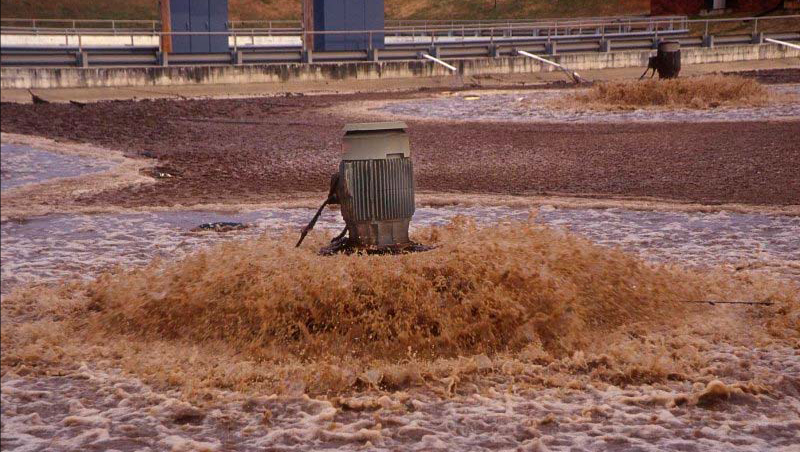Flow Visualisation of CFD Modelling Of Aeration Bioreactors In Activated Sludge Wastewater Treatment
This project is based at the Centre for Digital Entertainment and aims to reduce the considerable energy consumption of aeration in activated sludge treatment.

Aims of the project are to reduce the considerable energy consumption of aeration in activated sludge treatment, and identify the preferred flow visualisation graphical methods for demonstrating aeration design improvements.
Objectives of the project are firstly to develop accurate multiphase gas-liquid fluid simulation to reveal core factors relating to hydrodynamic behaviour and energy consumption in aeration bioreactors. Furthermore, to determine the effects of bubble size and bubble size distribution on hydrodynamic behaviour and energy consumption. Moreover, to determine levels of accuracy by validating with experimental measurements. Using fluid simulation to determine the effects of design modifications on hydrodynamic behaviour. Develop graphical flow visualisation methods and virtual technology for engineering demonstration. Identify engineers preferences towards these flow visualisation virtual environments.
Project Outline:
This multi-disciplinary project in engineering and computer vision is based in the Centre for Digital Entertainment (CDE), which is an EngD programme; and a collaboration between the University of Bath and Bournemouth University. The project is co-supervised by an industrial company, Wessex Water (WW), the Water Innovation and Research Centre (WIRC) at the University of Bath, and the National Centre of Computer Animation (NCCA) at Bournemouth University.
WW invest in new state-of the art aeration systems that enable better understanding of the aeration treatment process. WW recognises that existing designs of oxidation ditches can potentially have a detrimental effect on hydrodynamics and oxygen uptake efficiency. New aeration systems in oxidation ditches are of interest to WW.
This project uses Computational Fluid Dynamics (CFD) and flow visualisation modelling to increase the understanding of optimal operating and flow conditions in aeration bioreactors. CFD models are an important mathematical and numerical tool for predicting multiphase flows and aeration conditions in activated sludge bioreactors, in order to enable process design improvements and retrofit of existing technology. This project focuses on predicting dissolved oxygen and bubble plume distributions, which are key indicators of aerobic conditions in bioreactors. Fluid graphical visualisation enables a better understanding of the hydrodynamics and the retrofitting of existing aeration technology design.
Science:
Bubble size can be reduced in aeration tanks by design modifications to the submerged aeration device. A smaller bubble size can result in an overall increase in oxygen mass transfer and a reduction in energy consumption. Bubble size distribution modelling can potentially improve the accuracy and limitations of constant bubble size models. This enables the prediction of hydrodynamic behaviour of natural populations of bubbles in real full-scale operational bioreactors. The priorities of engineering CFD model development are accuracy, robustness and computational efficiency, but there is less emphasis on 3D graphical flow visualisation. There is a need for better communication of results to engineers by the use of advanced computer graphical and animation methods in flow visualisation.
Impact:
The project can help reduce the considerable energy consumption of aeration in activated sludge treatment. The project can use virtual environments with high visual fidelity animated flow visualisations for better communication of results to engineers; and for more effective demonstration of aeration system improvements for investment; and for more effective training of process plant operators.
Alternative contacts for this project are Tom Matko, Dr Jannis Wenk and Dr John Chew.



